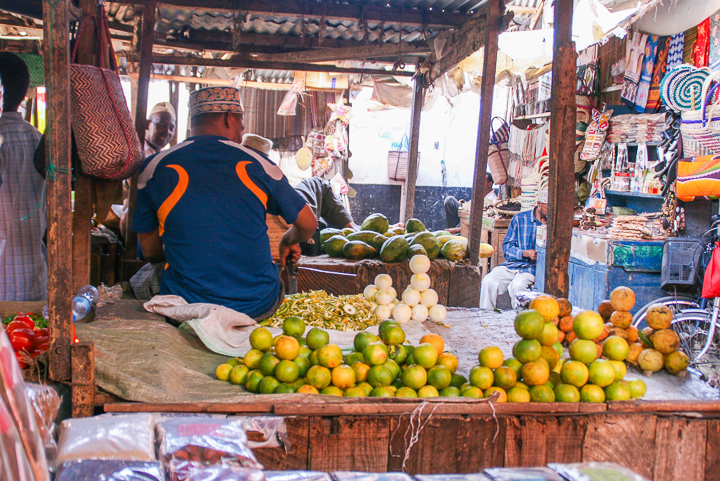I was allergic to shrimp for a hot minute in my lifetime. I must have been four or five or so, I think I was only allergic for a couple years, but it was enough to stave me off of that particular shellfish for a good twenty-five years. It’s funny how stubborn children can be, isn’t it?
Something changed when I moved to Dar es Salaam. The shrimp here are super fresh and meaty, with only a hint of seafoody-ness. This newfound love of shrimp (I’m also eating bananas and eggs now guys, look at me!) has resulted in regular trips to the fish market for a kilo or two of shrimp, plus whatever the catch of the day is.
The guys at the fish market enthusiastically offer to shell and de-vein any purchased shrimp for their customers (for a small fee, of course). While I always splurge and get my fish scaled and gutted, I always refuse the shrimp, and opt to have them bagged up, whole. They look at me like I’m crazy, and for a second, I doubt my decision.
But once at home, I dump my whole shrimp into the sink. The meticulous process of cleaning and de-veining the shrimp becomes a meditative one for me, and reaffirms my personal reasons for why I’ve refused this work to be done for me back at the fish market.
The sound of the faucet running at a slow drip and the small of fresh shrimp shells collecting in the basin reminds me of watching my mother prep dinner as a kid. The process of ripping shrimps’ heads off, then their little catepillar-y legs, then their exoskeletal shells, then deveining and rinsing–this becomes a one-woman assembly line, and is (odd, I know) soothing in its monotony and repetition. Pretty soon I have a loose heap of heads and shells on one side of me, and a pile of translucent gray shrimp on the other. That is a satisfaction of work well done that few other jobs can guarantee.
Fresh shrimp needn’t be cooked for long. Just several minutes in the pan until they start curling and turn peachy does the trick. Here, I’ve dusted them with coconut for an easy and healthy coconut crusted shrimp. I can’t wait to try this recipe, amp’d up with some tequila and lime, or a sprinkle of za’atar powder. But simple is good too, and I like this recipe for letting the true flavor of fresh shrimp shine through. Man, I am so glad I’m not allergic to shrimp anymore.
Coconut crusted shrimp
- 1 pound jumbo shrimp (with heads and shells), peeled and de-veined at home.
- 1 cup shredded coconut, or the pulp leftover from making coconut milk
- 1 tsp salt + pinch
- 1/2 tsp pepper
- 1/2 tsp paprika
- 2 green onions (green parts only), finely chopped
- 1 egg
- Preheat oven to 375° F
- Rinse and pat shrimp dry with a paper towel. Season with a pinch of salt.
- In a separate bowl, mix shredded coconut with salt, pepper, paprika, and green onions. In another small bowl, beat egg.
- Set up your baking pan. Line pan with foil, and set a rack- like a cooling rack you use for baked goods- on top. This helps air circulate on all sides of the shrimp and helps the coconut crust get…well, crustier.
- Dip an individual shrimp into the egg, flip to coat, and then press into the coconut mixture, flipping to coat in the coconut as well. Make sure the shrimp is nice and covered as much as possible. There will be some that will fall off, but that’s okay. As you dress each shrimp, carefully place on the baking rack.
- Bake in the middle of the oven for 20-25 minutes, or until shrimp are pink and coconut flakes begin to brown.
- Take out of the oven. Serve with lime, and lots of veggies!
Note: This recipe is Paleo, hence the lack of flour or breadcrumbs. If you’re a “normal” eater, add a couple tablespoons of breadcrumbs into the coconut, and coat each shrimp with a dusting of flour before dipping into the egg wash. You might want to crank up the heat 15-20°, too!
Msasani Fish Market off Kimweri Avenue: Driving South from the Peninsula towards Bagamoyo, make your third right (there is a sign for Imaging Consultants). Go down the dirt path and the market will be tucked away behind a metal gate on your right hand side, immediately before a huge baobab tree.
























